Validating models of sensory conflict and perception for motion sickness prediction
- PMID: 36971844
- PMCID: PMC10258185
- DOI: 10.1007/s00422-023-00959-8
Validating models of sensory conflict and perception for motion sickness prediction
Abstract
The human motion perception system has long been linked to motion sickness through state estimation conflict terms. However, to date, the extent to which available perception models are able to predict motion sickness, or which of the employed perceptual mechanisms are of most relevance to sickness prediction, has not been studied. In this study, the subjective vertical model, the multi-sensory observer model and the probabilistic particle filter model were all validated for their ability to predict motion perception and sickness, across a large set of motion paradigms of varying complexity from literature. It was found that even though the models provided a good match for the perception paradigms studied, they could not be made to capture the full range of motion sickness observations. The resolution of the gravito-inertial ambiguity has been identified to require further attention, as key model parameters selected to match perception data did not optimally match motion sickness data. Two additional mechanisms that may enable better future predictive models of sickness have, however, been identified. Firstly, active estimation of the magnitude of gravity appears to be instrumental for predicting motion sickness induced by vertical accelerations. Secondly, the model analysis showed that the influence of the semicircular canals on the somatogravic effect may explain the differences in the dynamics observed for motion sickness induced by vertical and horizontal plane accelerations.
Keywords: Motion sickness; Perceptual modelling; Sensory conflict; Sensory integration; State estimation.
© 2023. The Author(s).
Figures

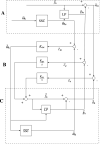


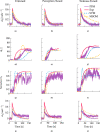
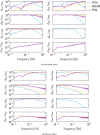
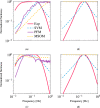

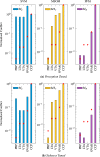
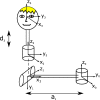
Similar articles
-
The role of vision in sensory integration models for predicting motion perception and sickness.Exp Brain Res. 2024 Mar;242(3):685-725. doi: 10.1007/s00221-023-06747-x. Epub 2024 Jan 23. Exp Brain Res. 2024. PMID: 38253934 Free PMC article.
-
Individual motion perception parameters and motion sickness frequency sensitivity in fore-aft motion.Exp Brain Res. 2021 Jun;239(6):1727-1745. doi: 10.1007/s00221-021-06093-w. Epub 2021 Mar 29. Exp Brain Res. 2021. PMID: 33779793 Free PMC article.
-
Theoretical considerations on canal-otolith interaction and an observer model.Biol Cybern. 2002 Mar;86(3):191-207. doi: 10.1007/s00422-001-0289-7. Biol Cybern. 2002. PMID: 12068786
-
Motion sickness and perception: a reappraisal of the sensory conflict approach.Br J Psychol. 1992 Nov;83 ( Pt 4):449-71. doi: 10.1111/j.2044-8295.1992.tb02452.x. Br J Psychol. 1992. PMID: 1486361 Review.
-
Modelling motion sickness and subjective vertical mismatch detailed for vertical motions.Brain Res Bull. 1998 Nov 15;47(5):537-42. doi: 10.1016/s0361-9230(98)00088-4. Brain Res Bull. 1998. PMID: 10052585 Review.
Cited by
-
Could Vulnerability to Motion Sickness and Chronic Pain Coexist within a Sensorimotor Phenotype? Insights from over 500 Pre-Pain Motion Sickness Reports.Brain Sci. 2023 Jul 12;13(7):1063. doi: 10.3390/brainsci13071063. Brain Sci. 2023. PMID: 37508995 Free PMC article.
-
A computational model of motion sickness dynamics during passive self-motion in the dark.Exp Brain Res. 2024 May;242(5):1127-1148. doi: 10.1007/s00221-024-06804-z. Epub 2024 Mar 15. Exp Brain Res. 2024. PMID: 38489025
-
Personalizing motion sickness models: estimation and statistical modeling of individual-specific parameters.Front Syst Neurosci. 2025 Jun 16;19:1531795. doi: 10.3389/fnsys.2025.1531795. eCollection 2025. Front Syst Neurosci. 2025. PMID: 40589464 Free PMC article.
-
Theoretical considerations on models of vestibular self-motion perception as inherent in computational frameworks of motion sickness.Biol Cybern. 2025 Aug 7;119(4-6):22. doi: 10.1007/s00422-025-01018-0. Biol Cybern. 2025. PMID: 40773048 Free PMC article.
-
The role of vision in sensory integration models for predicting motion perception and sickness.Exp Brain Res. 2024 Mar;242(3):685-725. doi: 10.1007/s00221-023-06747-x. Epub 2024 Jan 23. Exp Brain Res. 2024. PMID: 38253934 Free PMC article.
References
MeSH terms
LinkOut - more resources
Full Text Sources
Medical

